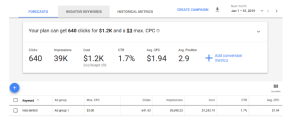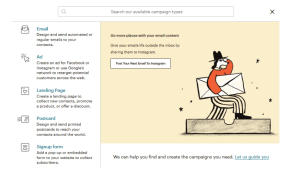These days, starting an eCommerce shop is easy enough to do. There are plenty of affordable platforms available that will let you create any type of online business you can think of.
And when it comes to web design and functionality, there are just as many free and premium marketing tools online to help you get started.
However, You can set an e-commerce trend by launching an eCommerce site, and becoming a successful online business owner are very different things. While you may get your website up and running on your own, you’ll need ample guidance if growing your business is on your agenda.
Luckily for you, we have a simple checklist that you can follow to get your eCommerce shop started on the right path. If you are new to this, here is the Step by step guide to launch your first eCommerce store.
And if you follow it, and pair your plan with these digital marketing strategies, you’ll see your traffic, conversions, and sales increasing in no time.
So, let’s get started.
1. Content Marketing
Every business needs a website, and every website needs a blog. And that means your online shop needs high-quality content that adds value to current and new customers.
96% of people that arrive on your website for the first time are not ready to buy.
But that doesn’t mean you can’t give them something to come back to. In addition to providing great products and services, you should aim to create blog content that informs, educates, and even entertains those that arrive on your website.
Not sure what to write about?
Check out a tool like Answer the Public.
After entering the keyword you want to rank for in search results, this free online tool shows you actual Google queries people are typing into the search bar.
The great thing about this is you can use those questions real people are asking and write about them, so the next time someone asks a similar question, your website pops up in the search results.
But remember, selling products online from home is about more than listing products in your online shop and whipping up a few blog posts for people to read.
In fact, a good content marketing plan will include things like:
- Creating standard web pages like an ‘About Us,’ ‘Contact Us,’ and checkout pages
- Uploading high-resolution product images and optimizing the product descriptions for SEO
- Activating payment gateways for customers to use when buying from your online store
- Building an email list for email campaigns
- Planning your blog post publishing schedule
- Building a strong social media presence
- Looking into the different advertising methods, such as pay-per-click ads, to generate more leads
Remember, content marketing involves promoting your brand to your target audience and convincing people to convert. Having a well-thought-out plan as you open up shop will save you lots of time and get you more customers from the start.
2. Advertising
Speaking of advertising, there are several ways to advertise your online shop and get more people to buy. For example, you can send out email campaigns to share promotions, run contests on your social media accounts, an even create banners on your site with timers to create a sense of urgency.
That said, one of the most affordable, easy to do, and effective ways to advertise is pay-per-click advertising. Previously known as Google AdWords, Google Ads is a great way to drive organic traffic to your eCommerce shop by honing in on popular keywords related to what you sell.
With Google Ads, you choose keywords you want to target and bid on them. The more popular a keyword, the more expensive it will be. The good news is, you can set maximum bid amounts, so you don’t overspend on your advertising budget.
When someone enters a relevant search query into Google, the advertiser that’s targeting the keyword that has the highest bid wins the auction. This means an advertisement for their website appears in the search results.
If your ad wins, and someone clicks on it, you pay the amount you agreed, and the site visitor comes to your site (and hopefully converts).
If you need help with what keywords to bid on, you can use the built-in Keyword Planner.
Here, you’ll see the keywords:
- Expected number of clicks and impressions
- Total ad cost plus the expected daily budget
- Click through rate
- Average cost per click
- Average search results position
You can also use the Keyword Planner to find alternative keywords that fit your budget or target your audience in different ways.
The key to good advertising is to target keywords that are competitive enough to drive traffic, but not so competitive they wipe your ad budget out fast.
3. Use a relevant URL
A great way to drive people to your eCommerce site from other channels, including organic search results, paid advertisements, and social media, is to have a relevant domain name.
When you buy a domain name for your eCommerce shop, it should reflect what you have to offer your target audience. This way, after only looking at your site’s URL, people will know whether you have what they’re looking for or not.
Not sure how to pick the right domain name for your business? Check out these helpful tips:
- Keep it short and easy to type so people can revisit your site
- Target your area if that’s where you want business to come from
- Include keywords so people know what you’re all about before arriving on your site
- Choose a popular extension such as .com, .net, or .org
- Research the competition so you don’t have to fight with well-established businesses for customers
- Protect your domain name by securing it, buying similar and misspelled domain names, and keeping all sensitive domain name information safe
Your domain name is one of the most important elements of your eCommerce site. If your goal is to increase traffic, conversions, and sales, put some thought into the name you choose so your business can grow.
4. Email Marketing
As mentioned above, email marketing is great for advertising your online shop to subscribers, no matter where they are in the customer journey. And the best part about email marketing is that not only does it offer the highest ROI out of all marketing strategies, but it’s also cost effective too.
In fact, if you use MailChimp as your email service provider, you won’t have to pay a dime until you reach more than 2,000 subscribers or 12,000 emails a month.
Create emails to send to subscribers, ads for Facebook or Instagram, landing pages for your eCommerce shop, postcards, and even signup forms for your site so people can subscribe.
From there, automate your campaigns to send out based on specific behavior. For instance, send out a welcome email anytime someone subscribes to your email list, and include a coupon to use in your store to entice them to come back.
Email marketing is a simple way to stay engaged with those that have shown interest in what you have to offer. It’s also a great way to keep in touch with those that never converted while on your site.
5. Add Testimonials
84% of people trust online reviews as much as friends and family. After all, big-name retailers like Amazon wouldn’t add customers testimonials to their website if they thought they didn’t make a difference in buyer behavior.
Need an easy way to ask satisfied customers for their testimonials?
Going back to MailChimp, you can always create an automated email campaign that sends out to people that have made a purchase on your site and ask them for a review.
Ask for star ratings, personal testimonials, and approval from happy customers to add their names to your website for others to see.
If people rely on what others are saying about your brand and products before they make a purchase, give the people what they want and show them how satisfied your customers are.
Final Thoughts
In the end, this is by no means an exhaustive checklist for opening up a successful online shop. However, if you follow these basics, you’ll build a strong foundation yourself that you can use to grow your business.
Take the time to focus on more than web design and product pages on your eCommerce site. While these things are important, people aren’t going to magically appear and buy from you.
You need to put the work in to expose your brand to a broader audience, show people why you’re worth their money and go above and beyond just selling things for a profit.














Digital Marketing Course in Jaipur
Recognizing the importance, many institutions have started to conduct courses to train youngsters in the art of digital marketing. Similar to a college education program, even digital marketing involves a process of structured learning.